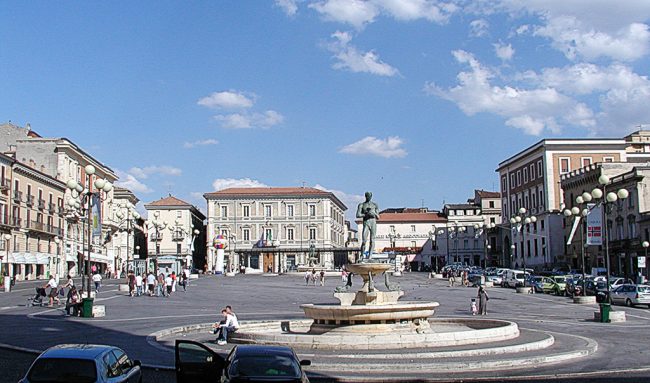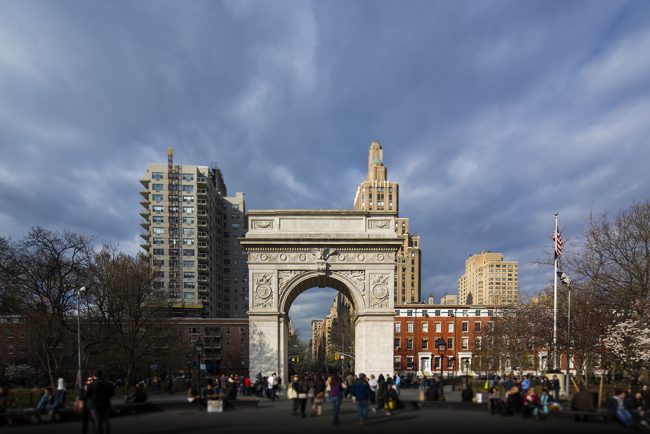
We are celebrating 15 years — and counting — of stories that are deeply researched and deeply felt, that build a historical record of what the city has been.
We are celebrating 15 years — and counting — of stories that are deeply researched and deeply felt, that build a historical record of what the city has been.
The anthology, like the square, is a gathering place. In City Squares: Eighteen Writers on the Spirit and Significance of Squares Around the World, editor Catie Marron brings together a wide range of authors to reflect on what a square has meant or could mean, to them or to all of us. Zadie Smith dives into the material memory of Italian piazzas; David Adjaye traces an aesthetic lineage in Marrakech; Jehane Noujaim and Evan Osnos report from Tahrir and Tiananmen Squares, respectively. In this diverse chorus, each voice rings out. In the excerpt below, from his introduction to a section on culture, New York Times architecture critic Michael Kimmelman speaks to the function of the square in New York City and beyond. Kimmelman will join Marron and critic and educator Reed Kroloff in conversation on June 23, at Rizzoli Books (more information here). We hope to see you there tomorrow, or out by the fountain sometime soon.
–UO

La Piazza del Duomo in L’Aquila, before the earthquake. | Photo by Ra Boe via Wikimedia Commons
So, in fact, a successful square is not just about light, air, proportion, and people. It must also give form to some shared notion of civic identity. That is what squares have done in French and Italian towns for centuries. In 2009 the Italian city of L’Aquila suffered a terrible earthquake. The entire historic center, not a must-see in Fodor’s but dignified and handsome, was damaged and shuttered. I went the day after the quake and have returned several times since. L’Aquila is a heartbreaker. Due partly to corruption, to incompetence, and to a failure to recognize Italy’s own great urban tradition, the Italian government pretty much threw up its hands and abandoned the place. Vast public resources were squandered creating so-called new towns, faceless housing projects with no amenities, no public spaces, shops, or transport, on the fringes of the city, along an exurban nowhere sprawl of highways. Supposedly temporary homes for displaced l’Aquilans, these new towns inevitably became permanent places to dump the elderly and local families cut off from daily life as they knew it, meaning the life of the city’s streets and plazas. L’Aquila was its street life and network of charming public squares, a working city of some seventy-five thousand that took pride in its lovely Baroque churches, modern architecture, university, and families with local roots dating back to the Middle Ages. What needed to be saved were places like the central square outside the Duomo, a sloping piazza with a fountain where one morning I bumped into Antonio Antonacci and his friends standing amid scaffolding and rubble. Antonacci is a retired lawyer. Like many others, he was displaced by the quake and had to move in with his children an hour away, but he felt lonely and so was driven by his family every week into the city to meet old friends also driven there by their families—and the men would hang out in the now mostly empty public square outside the Duomo, because to them the square, even ruined, was L’Aquila, and there was nothing to replace it. “It’s the only real home we have,” Antonacci told me.
I grew up in Greenwich Village, Jane Jacob’s old neighborhood, where Washington Square Park was my version of Antonacci’s Duomo square, the place where I met friends, cooled off in the fountain, played catch with my dad, and people-watched. It was the heart of what was then a scruffier but more venturesome neighborhood than today’s Village. The city’s urban planning czar Robert Moses had wanted to drive a highway straight through the middle of Washington Square. That the Village has become one of the most desirable and expensive places in the world is in no small measure due to Moses’s failure and the park’s survival. The good life, wrote the other great New York urban writer of Jacob’s era, Lewis Mumford, involves more than shared prosperity; it entails what Mumford described as an almost religious refashioning of values based on an ecological view of the city. Seen whole, in all its variety and interconnectedness, urban health is expressed physically in a natural configuration of built forms across the city. The art of architecture requires not just making attractive buildings but providing citizens with generous, creative, open, inviting public spaces. One of the basic truths of urban life turns out to be that there’s a nearly insatiable demand for such places. Under Michael Bloomberg’s administration, New York City inaugurated a program to convert streets across the five boroughs into plazas and squares. Making Times Square into a pedestrian mall was the program’s headliner. But the mayor’s office invited communities everywhere to suggest disused traffic triangles, parking lots, and other forlorn sites in far-flung areas that might also be reimagined. Dozens of new public spaces were proposed. The city carted in some potted trees, benches, chairs, and tables, and voilà, a new square was created. Some of these made an immediate difference in reducing crime, boosting local commerce, and improving street life.

The Washington Square Park Arch presides over the bustling square. | Photo by Parker Miles Bohm via Flickr
But the big news was just how much people craved public squares. Madison Square Park, lately renovated and one of the loveliest parks in New York City, faces the Flatiron Building, where Fifth Avenue and Broadway cross. The two avenues created for years what was the widest and most unmanageable street crossing in Manhattan. The Bloomberg administration’s idea was to turn the middle of that street into a new public square. One day I ran across Michael Bierut, whose design firm, Pentagram, faces the site, and he told me he had thought the square was a crazy plan when he first heard about it. Who in the world would sit in the middle of the street, he wondered, when you had one of the most beautiful parks in the city right there?
“Was I wrong,” Michael recalled, seeing the square mobbed, with its café tables and umbrellas scattered where trucks had rumbled down Broadway and Fifth Avenue. The new square instantly became one of the most successful public spaces in the city, with people toting prosciutto sandwiches out of Eataly, the nearby Italian food market, and Shake Shack burgers out of the park just to sit in the middle of traffic—because from there you can see the Flatiron Building one way and the Empire State building the other, but also for the reason people gravitate to Trafalgar Square in London or the Piazza della Signoria in Florence as opposed to Hampstead Heath or the Boboli Gardens: to be in the middle of things. As retreats, parks give us room to breathe and feel alone. Squares reaffirm our commonality, our shared sense of place, and our desire to be included.
From Michael Kimmelman, “Introduction: Culture: Power of the Place,” in City Squares: Eighteen Writers on the Spirit and Significance of Squares Around the World, Ed. Catie Marron. Reprinted with permission from HarperCollins.
The views expressed here are those of the authors only and do not reflect the position of The Architectural League of New York.